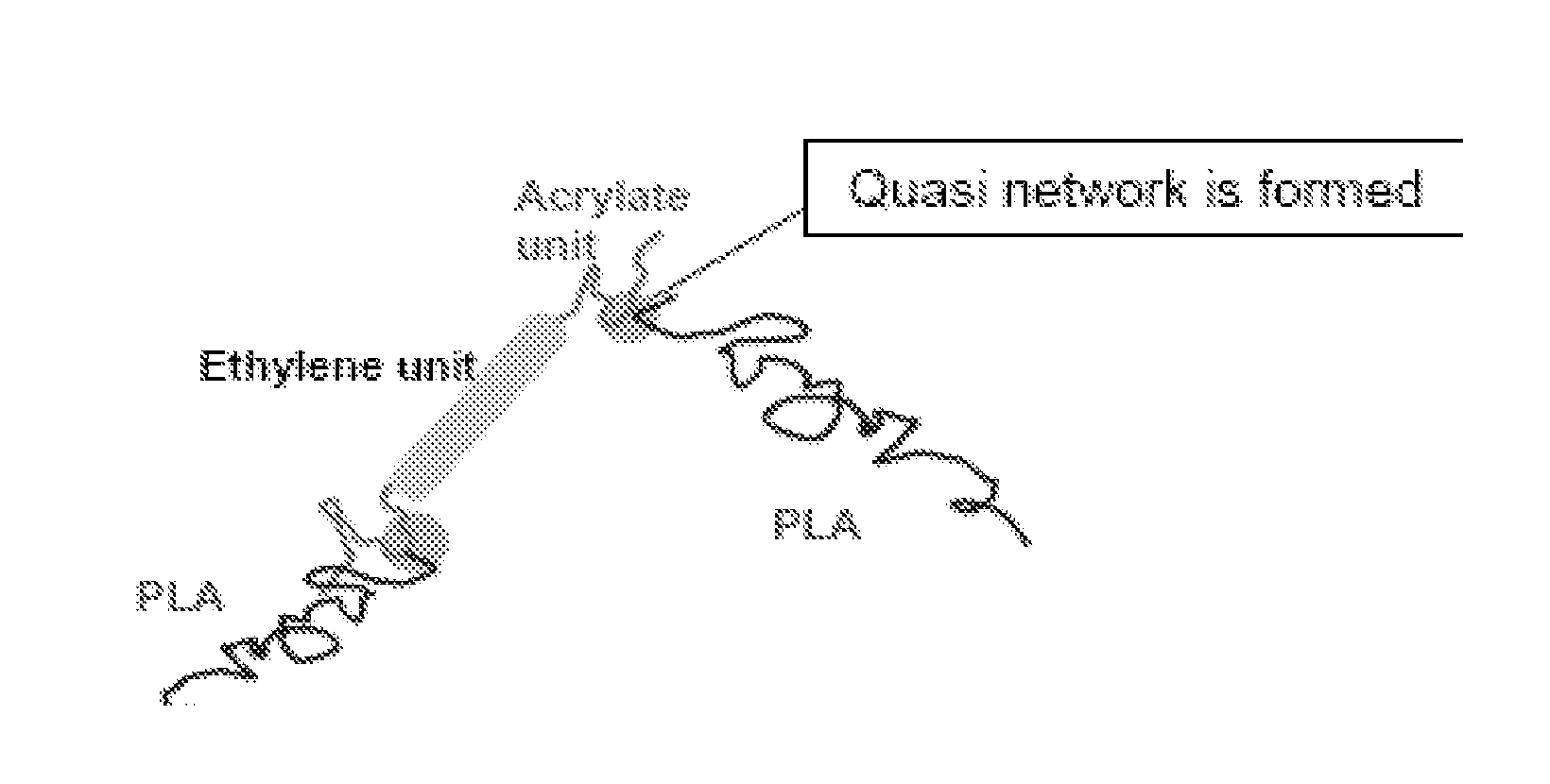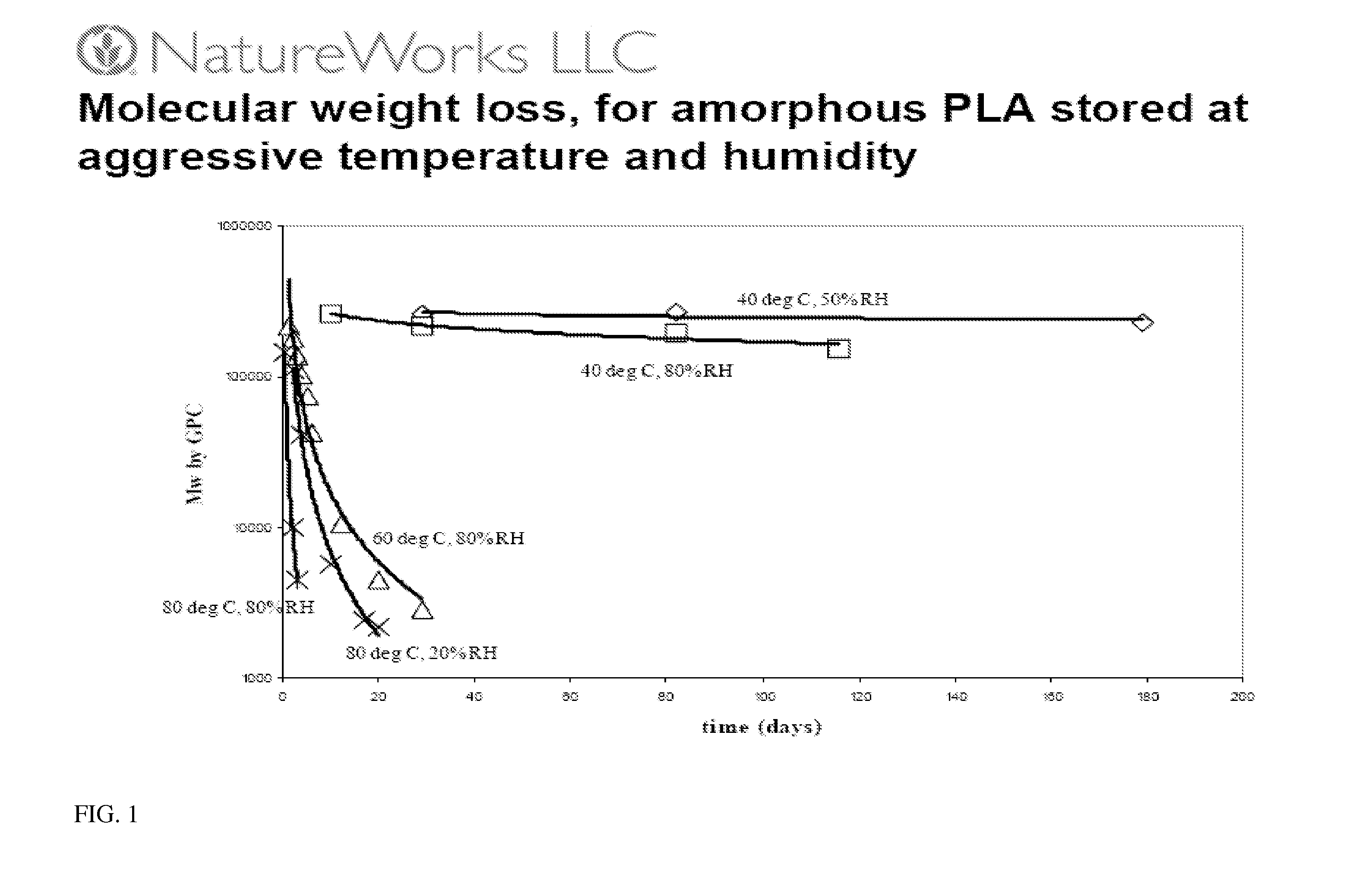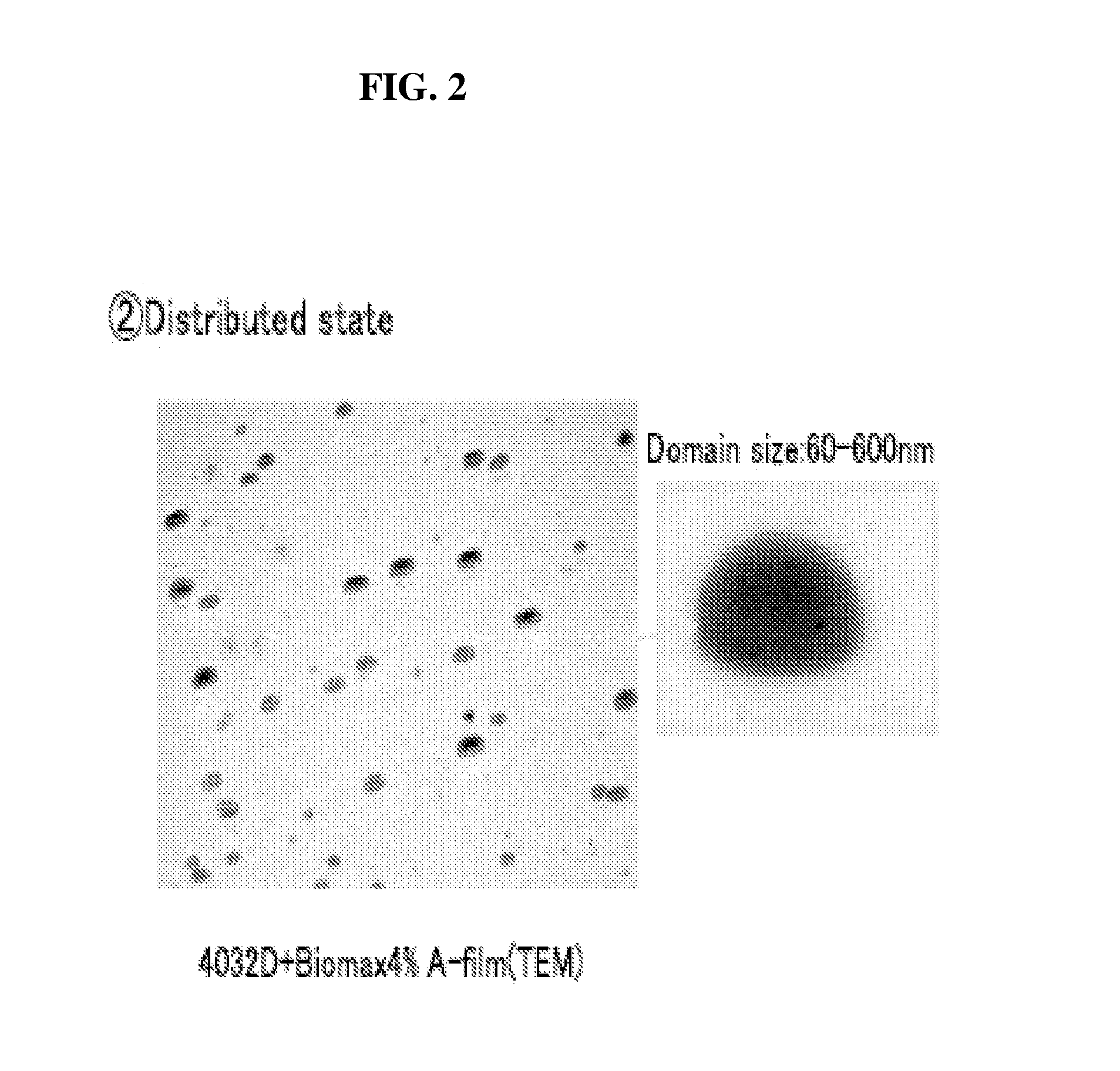Method to reprocess polylactic acid resin and articles
a polylactic acid and resin technology, applied in the direction of synthetic resin layered products, coatings, chemistry apparatus and processes, etc., can solve the problems of high volume quantity limitation, high cost, and inability or difficulty to use recycled or reclaimed pla film back into the core layer of new oriented pla films or pla articles, so as to prevent the degradation of pla polymers, improve the resistance of pla to degradation, and good compatibility with pla polymers
- Summary
- Abstract
- Description
- Claims
- Application Information
AI Technical Summary
Benefits of technology
Problems solved by technology
Method used
Image
Examples
example 1
[0073]A 2-layer coextruded biaxially oriented PLA film was made using sequential orientation on a 1.5 meter wide tenter frame line, including a core layer substantially of Natureworks® 4032D at about 96 wt % of the core layer and dry-blended with about 4 wt % of DuPont Biomax® 120 ethylene-acrylate copolymer. The coextruded heat sealable skin layer comprised substantially of Natureworks® 4060D at about 100 wt % of the skin layer.
[0074]The total thickness of this film substrate after biaxial orientation was ca. 80 G or 0.8 mil or 20 μm. The thickness of the respective heat sealable resin layer after biaxial orientation was ca. 6 G (1.5 μm). The thickness of the core layer after biaxial orientation was ca. 74 G (18.5 μm). The skin layer and the core layer were melt coextruded together at about 190° C. −205° C. The 2-layer co-extrudate was passed through a flat die to be cast on a chill drum of 24° C. using an electrostatic pinner at a casting speed of about 6 mpm. The formed cast shee...
example 2
[0082]A melt-blended pelletized formulation was prepared by compounding about 84.1 wt % Natureworks® 4032D crystalline PLA, about 14.9 wt % Natureworks® 4060D amorphous PLA, and about 1.0 wt % Biomax® 120 ethylene-acrylate copolymer. This formulation was melt-blended together using a twin-screw and vented extruder and pelletized. The pellets were re-processed through the twin-screw extruder for up to five extrusion passes and repelletized after each pass. After each extrusion cycle, the pellets were tested for intrinsic viscosity and color.
example 3
[0084]A process similar to Example 2 was repeated except that the amount of 4032D was about 83.3 wt %, the amount of 4060D was about 14.7 wt %, and the amount of ethylene-acrylate copolymer was about 2.0 wt %.
PUM
| Property | Measurement | Unit |
|---|---|---|
| Color | aaaaa | aaaaa |
| Intrinsic viscosity | aaaaa | aaaaa |
| Heat | aaaaa | aaaaa |
Abstract
Description
Claims
Application Information
 Login to View More
Login to View More - R&D
- Intellectual Property
- Life Sciences
- Materials
- Tech Scout
- Unparalleled Data Quality
- Higher Quality Content
- 60% Fewer Hallucinations
Browse by: Latest US Patents, China's latest patents, Technical Efficacy Thesaurus, Application Domain, Technology Topic, Popular Technical Reports.
© 2025 PatSnap. All rights reserved.Legal|Privacy policy|Modern Slavery Act Transparency Statement|Sitemap|About US| Contact US: help@patsnap.com



